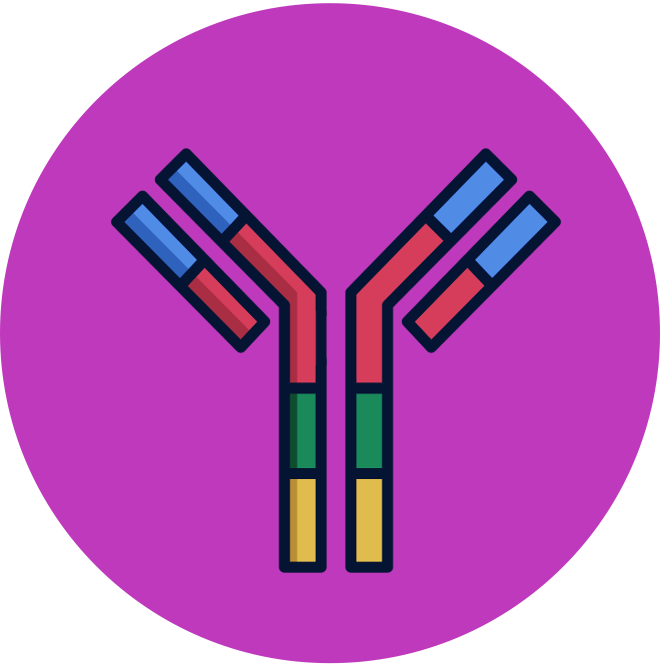

Immune System
SL Content Statements
-
C3.2.1
Pathogens as the cause of infectious diseases
-
Students should understand that a broad range of disease-causing organisms can infect humans. A disease-causing organism is known as a pathogen, although typically the term is reserved for viruses, bacteria, fungi and protists. Archaea are not known to cause any diseases in humans.
NOS: Students should be aware that careful observation can lead to important progress. For example, careful observations during 19th-century epidemics of childbed fever (due to an infection after childbirth) in Vienna and cholera in London led to breakthroughs in the control of infectious disease.
-
C3.2.2
Skin and mucous membranes as a primary defence
-
The skin acts as both a physical and chemical barrier to pathogens. Students are not required to draw or label diagrams of skin.
-
C3.2.3
Sealing of cuts in skin by blood clotting
-
Include release of clotting factors from platelets and the subsequent cascade pathway that results in rapid conversion of fibrinogen to fibrin by thrombin and trapping of erythrocytes to form a clot. No further details are required.
-
C3.2.4
Differences between the innate immune system and the adaptive immune system
-
Include the idea that the innate system responds to broad categories of pathogen and does not change during an organism’s life whereas the adaptive system responds in a specific way to particular pathogens and builds up a memory of pathogens encountered, so the immune response becomes more effective. Students are not required to know any components of the innate immune system other than phagocytes.
-
C3.2.5
Infection control by phagocytes
-
Include amoeboid movement from blood to sites of infection, where phagocytes recognize pathogens, engulf them by endocytosis and digest them using enzymes from lysosomes.
-
C3.2.6
Lymphocytes as cells in the adaptive immune system that cooperate to produce antibodies
-
Students should understand that lymphocytes both circulate in the blood and are contained in lymph nodes. They should appreciate that an individual has a very large number of B-lymphocytes that each make a specific type of antibody.
-
C3.2.7
Antigens as recognition molecules that trigger antibody production
-
Students should appreciate that most antigens are glycoproteins or other proteins and that they are usually located on the outer surfaces of pathogens. Antigens on the surface of erythrocytes may stimulate antibody production if transfused into a person with a different blood group.
-
C3.2.8
Activation of B-lymphocytes by helper T-lymphocytes
-
Students should understand that there are antigen-specific B-cells and helper T-cells. B-cells produce antibodies and become memory cells only when they have been activated. Activation requires both direct interaction with the specific antigen and contact with a helper T-cell that has also become activated by the same type of antigen.
-
C3.2.9
Multiplication of activated B-lymphocytes to form clones of antibody-secreting plasma cells
-
There are relatively small numbers of B-cells that respond to a specific antigen. To produce sufficient quantities of antibody, activated B-cells first divide by mitosis to produce large numbers of plasma B-cells that are capable of producing the same type of antibody.
-
C3.2.10
Immunity as a consequence of retaining memory cells
-
Students should understand that immunity is the ability to eliminate an infectious disease from the body. It is due to the long-term survival of lymphocytes that are capable of making the specific antibodies needed to fight the infection. These are memory cells.
-
C3.2.11
Transmission of HIV in body fluids
-
Include examples of the mechanisms of HIV (human immunodeficiency virus) transmission.
-
C3.2.12
Infection of lymphocytes by HIV with AIDS as a consequence
-
Students should understand that only certain types of lymphocyte are infected and killed, but that a reduction in these lymphocytes limits the ability to produce antibodies and fight opportunistic infections.
-
C3.2.13
Antibiotics as chemicals that block processes occurring in bacteria but not in eukaryotic cells
-
Include reasons that antibiotics fail to control infection with viruses.
-
C3.2.14
Evolution of resistance to several antibiotics in strains of pathogenic bacteria
-
Students should understand that careful use of antibiotics is necessary to slow the emergence of multiresistant bacteria.
NOS: Students should recognize that the development of new techniques can lead to new avenues of research; for example, the recent technique of searching chemical libraries is yielding new antibiotics.
-
C3.2.15
Zoonoses as infectious diseases that can transfer from other species to humans
-
Illustrate the prevalence of zoonoses as infectious diseases in humans and their varied modes of infection with several examples including tuberculosis, rabies and Japanese encephalitis. Include COVID-19 as an infectious disease that has recently transferred from another species, with profound consequences for humans.
-
C3.2.16
Vaccines and immunization
-
Students should understand that vaccines contain antigens, or nucleic acids (DNA or RNA) with sequences that code for antigens, and that they stimulate the development of immunity to a specific pathogen without causing the disease.
-
C3.2.17
Herd immunity and the prevention of epidemics
-
Students should understand how members of a population are interdependent in building herd immunity. If a sufficient percentage of a population is immune to a disease, transmission is greatly impeded.
NOS: Scientists publish their research so that other scientists can evaluate it. The media often report on the research while evaluation is still happening, and consumers need to be aware of this. Vaccines are tested rigorously and the risks of side effects are minimal but not nil. The distinction between pragmatic truths and certainty is poorly understood.
-
C3.2.18
Evaluation of data related to the COVID-19 pandemic
-
AOS: Students should have the opportunity to calculate both percentage difference and percentage change.



